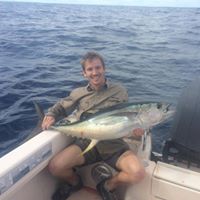James E Mullins
age ~72
from Federal Way, WA
- Also known as:
-
- James Edwin Mullins
- James Edwin Silver
- Jim Mullins
- James M Ullins
- Jamese Mullins
- Phone and address:
-
31412 10Th Ave S, Auburn, WA 98003
2538397687
James Mullins Phones & Addresses
- 31412 10Th Ave S, Federal Way, WA 98003 • 2538397687
- Post Falls, ID
- Yamhill, OR
- Forest Grove, OR
- Las Vegas, NV
- 5205 Standing Rock Pl, Las Vegas, NV 89130
Work
-
Company:Blair, schaefer, hutchison & wolfe, llp
-
Address:Po Box 1148, Vancouver, WA 98666
-
Phones:3606935883
-
Position:Manager
-
Industries:Legal Services
Education
-
Degree:J.D.
-
School / High School:University of Oregon School of Law
Ranks
-
Licence:Oregon - Active
-
Date:1985
Us Patents
-
Induction Of Viral Mutation By Incorporation Of Miscoding Ribonucleoside Analogs Into Viral Rna
view source -
US Patent:6887707, May 3, 2005
-
Filed:Mar 10, 2000
-
Appl. No.:09/522373
-
Inventors:Lawrence A. Loeb - Bellevue WA, US
James I. Mullins - Seattle WA, US -
Assignee:University of Washington - Seattle WA
-
International Classification:C12N015/01
C12N007/00
C12P019/34
C07H021/02 -
US Classification:435442, 435 913, 435 9132, 4352351, 435236, 435325, 435366, 4353723, 435440, 435441, 536 221, 536 231
-
Abstract:The present invention is directed to the identification and use of ribonucleoside analogs to induce the mutation of an RNA virus, including BVDV, HIV and HCV, or a virus which otherwise replicates through an RNA intermediate. The increase in the mutation rate of the virus results in reduced viability of progeny generations of the virus, thereby inhibiting viral replication. In addition to these methods and related compositions, the invention provides methods and combinatorial chemistry libraries for screening ribonucleoside analogs for mutagenic potential.
-
Ancestral And Cot Viral Sequences, Proteins And Immunogenic Compositions
view source -
US Patent:7655774, Feb 2, 2010
-
Filed:Feb 17, 2004
-
Appl. No.:10/780507
-
Inventors:James I. Mullins - Seattle WA, US
Allen G. Rodrigo - Auckland, NZ
Gerald H. Learn - Kingston WA, US
Fusheng Li - Seattle WA, US
David C. Nickle - Seattle WA, US
Mark A. Jensen - Snohomish WA, US -
Assignee:University of Washington - Seattle WA
-
International Classification:C07H 21/02
C12N 15/00
C12N 1/20 -
US Classification:536 231, 4353201, 4352523
-
Abstract:The present invention is directed to ancestral and COT nucleic acid and amino acid sequences, methods for producing such sequences and uses thereof, including prophylactic and diagnostic uses.
-
Ancestral Viruses And Vaccines
view source -
US Patent:20040115621, Jun 17, 2004
-
Filed:May 19, 2003
-
Appl. No.:10/441926
-
Inventors:Allen Rodrigo - , US
Howard Ross - , US
James Mullins - Seattle WA, US -
International Classification:C12Q001/70
C07H021/04
C07K014/155
C07H021/02 -
US Classification:435/005000, 435/069100, 435/320100, 435/325000, 435/456000, 530/350000, 536/023720
-
Abstract:The present invention is directed to ancestral HIV and FIV nucleic acid and amino acid sequences, methods for producing such sequences and uses thereof, including prophylactic and diagnostic uses.
-
Ancestral Viruses And Vaccines
view source -
US Patent:20040116684, Jun 17, 2004
-
Filed:May 19, 2003
-
Appl. No.:10/441949
-
Inventors:Allen Rodrigo - , US
Howard Ross - , US
James Mullins - Seattle WA, US -
International Classification:C07H021/04
C12N007/00 -
US Classification:536/023720, 435/235100
-
Abstract:The present invention is directed to ancestral viral nucleic acid and amino acid sequences, methods for producing such sequences and uses thereof, including prophylactic and diagnostic uses.
-
Induction Of Viral Mutation By Incorporation Of Miscoding Ribonucleoside Analogs Into Viral Rna
view source -
US Patent:20050187180, Aug 25, 2005
-
Filed:Apr 4, 2005
-
Appl. No.:11/098796
-
Inventors:Lawrence Loeb - Bellevue WA, US
James Mullins - Seattle WA, US -
Assignee:University of Washington - Seattle WA
-
International Classification:A61K048/00
C12N015/86
C12N007/00 -
US Classification:514044000, 435235100, 435456000
-
Abstract:The present invention is directed to the identification and use of ribonucleoside analogs to induce the mutation of an RNA virus, including BVDV, HIV and HCV, or a virus which otherwise replicates through an RNA intermediate. The increase in the mutation rate of the virus results in reduced viability of progeny generations of the virus, thereby inhibiting viral replication. In addition to these methods and related compositions, the invention provides methods and combinatorial chemistry libraries for screening ribonucleoside analogs for mutagenic potential.
-
Aids Ancestral Viruses And Vaccines
view source -
US Patent:20070009551, Jan 11, 2007
-
Filed:Feb 16, 2001
-
Appl. No.:10/204204
-
Inventors:James Mullins - Seattle WA, US
Allen Rodrigo - Auckland, NZ
Gerald Learn - Kingston WA, US
Fusheng Li - Seattle WA, US -
International Classification:C12Q 1/70
C07H 21/04
A61K 39/21
C07K 14/16
C07K 16/10
C12N 15/867
C07H 21/02 -
US Classification:424208100, 435005000, 435069300, 435456000, 435325000, 530350000, 536023720, 530388300
-
Abstract:The present invention is directed to ancestral HIV nucleic acid and amino acid sequences, methods for producing such sequences and uses thereof, including prophylactic and diagnostic uses.
-
Conserved-Element Vaccines And Methods For Designing Conserved-Element Vaccines
view source -
US Patent:20090092628, Apr 9, 2009
-
Filed:Mar 2, 2007
-
Appl. No.:11/713474
-
Inventors:James Mullins - Seattle WA, US
David Nickle - Seattle WA, US
Morgane Rolland - Seattle MA, US -
International Classification:A61K 39/00
G06F 19/00 -
US Classification:4241881, 702 20
-
Abstract:Embodiments of the present invention include conserved-element vaccines and methods for designing and producing conserved-element vaccines. A conserved-element vaccine (“CEVac”) is a recombinant and/or synthetic vaccine that incorporates only highly conserved epitopes from an observed set of pathogen variants. The conserved epitopes are identified computationally by aligning biopolymer sequences, such as concatenated polypeptide sequences that together represent a pathogen proteome, corresponding to an observed set of pathogen variants, and computationally selecting conserved subsequences according to a number of subsequence-selection criteria. These subsequence-selection criteria may include a minimum conserved-subsequence length, a threshold frequency of occurrence of a particular monomer at each conserved, single-monomer position within a conserved subsequence, a threshold combined occurrence for a set of allowable variant monomers at a particular conserved, variable position within a conserved subsequence, and a maximum number of variable positions within a subsequence. A set of conserved subsequences identified according to the subsequence-selection criteria are then filtered to remove subsequences identical to, or too similar to, naturally-occurring host subsequences, and are then assembled into expression vectors for incorporation into microbial hosts for biosynthesis of a recombinant CEVac or assembled into one or more synthetic constructs for a synthetic CEVac.
-
Conserved-Element Vaccines And Methods For Designing Conserved-Element Vaccines
view source -
US Patent:20110269937, Nov 3, 2011
-
Filed:Apr 29, 2011
-
Appl. No.:13/097592
-
Inventors:James Mullins - Seattle WA, US
David Nickle - Seattle WA, US
Morgane Rolland - Seattle WA, US -
Assignee:higher education - Seattle WA
-
International Classification:C07K 7/08
C07K 7/06
G06N 5/00
C07H 21/04 -
US Classification:530326, 530327, 536 2372, 530328, 706 46
-
Abstract:Embodiments of the present invention include conserved-element vaccines and methods for designing and producing conserved-element vaccines. A conserved-element vaccine (“CEVac”) is a recombinant and/or synthetic vaccine that incorporates only highly conserved epitopes from an observed set of pathogen variants. The conserved epitopes are identified computationally by aligning biopolymer sequences, such as concatenated polypeptide sequences that together represent a pathogen proteome, corresponding to an observed set of pathogen variants, and computationally selecting conserved subsequences according to a number of subsequence-selection criteria. These subsequence-selection criteria may include a minimum conserved-subsequence length, a threshold frequency of occurrence of a particular monomer at each conserved, single-monomer position within a conserved subsequence, a threshold combined occurrence for a set of allowable variant monomers at a particular conserved, variable position within a conserved subsequence, and a maximum number of variable positions within a subsequence. A set of conserved subsequences identified according to the subsequence-selection criteria are then filtered to remove subsequences identical to, or too similar to, naturally-occurring host subsequences, and are then assembled into expression vectors for incorporation into microbial hosts for biosynthesis of a recombinant CEVac or assembled into one or more synthetic constructs for a synthetic CEVac.
Name / Title
Company / Classification
Phones & Addresses
Manager
Blair, Schaefer, Hutchison & Wolfe, LLP
Legal Services
Legal Services
Po Box 1148, Vancouver, WA 98666
Principal
Brigand's Hideout LLC
Nonclassifiable Establishments
Nonclassifiable Establishments
105 W Evergreen Blvd, Vancouver, WA 98660
Manager
Cumberland Group LLC
631 N Stephanie St, Henderson, NV 89014
Secretary
Schellomar Capital, Inc
5516 Boulder Hwy, Las Vegas, NV 89122
Lawyers & Attorneys

James Daryl Mullins, Vancouver WA - Lawyer
view sourceAddress:
105 W Evergreen Blvd Ste 200, Vancouver, WA 98660
3606935883 (Office)
3606935883 (Office)
Licenses:
Oregon - Active 1985
Washington - Active 1975
Washington - Active 1975
Education:
University of Oregon School of Law
Degree - J.D. - Law
Graduated - 1975
Lewis and Clark College
Degree - B.S. - Political Science
Graduated - 1972
Degree - J.D. - Law
Graduated - 1975
Lewis and Clark College
Degree - B.S. - Political Science
Graduated - 1972
Specialties:
Litigation - 40%
Business - 20%
Real Estate - 20%
Insurance - 10%
Employment / Labor - 10%
Business - 20%
Real Estate - 20%
Insurance - 10%
Employment / Labor - 10%
Associations:
Oregon State Bar - Member, 1985-present
Washington State Bar Association - Member, 1975-present
American Bar Association, Business Law Section - Member
American Bar Association, Labor and Employment Law Section - Member
American Bar Association, Litigation Section - Member
Clark County Bar Association - Member
Multnomah Bar Association - Member
Washington State Bar Association - Member, 1975-present
American Bar Association, Business Law Section - Member
American Bar Association, Labor and Employment Law Section - Member
American Bar Association, Litigation Section - Member
Clark County Bar Association - Member
Multnomah Bar Association - Member

James Daryl Mullins, Vancouver WA - Lawyer
view sourceAddress:
105 W Evergreen Blvd, Vancouver, WA 98660
Phone:
3606935883 (Fax)
Jurisdiction:
Oregon
Memberships:
Oregon State Bar

James Daryl Mullins, Vancouver WA - Lawyer
view sourceAddress:
105 W Evergreen Blvd, Vancouver, WA 98660
Phone:
3606935883 (Phone), 3606931777 (Fax)
Experience:
50 years
Jurisdiction:
Washington (1975)
Memberships:
Washington State Bar (1975)
Resumes
News

Wendy's Imaginary Story
view source- Midland and Big Time AJ in Houston. We had a contingent from Central Texas and one from West Texas, two statewide candidates (Dan Branch and Harvey Hilderbran) and we had logic, food, music (with the wonderful talent of James Mullins), and political discussion! I think we will do it again.
- Date: Jan 20, 2014
- Category: U.S.
- Source: Google

Researchers come a step closer to finding HIV vaccine
view source- James Mullins, UW professor of microbiology, medicine and laboratory medicine, leads one of the two laboratories that did genetic analyses of the virus. He said the study proved that an HIV vaccine is within reach.
- Date: Sep 15, 2012
- Category: Health
- Source: Google

James Mullins
view sourceYoutube
Flickr
Myspace
Get Report for James E Mullins from Federal Way, WA, age ~72







